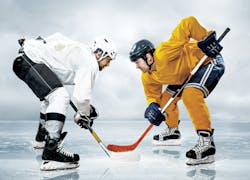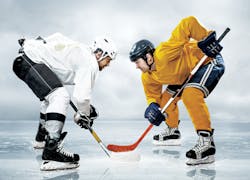Marketing your Practice through Sports Dentistry
By Ray Padilla, DDS
Imagine you were the only dentist in your area that offered a specific procedure. The competition would be minimal. Patients would seek your office because only you were providing that service.
Today, there is still a segment of dentistry that is minimally offered by dentists -- sports dentistry, whereby oral/facial injuries can be prevented. Oral/facial injuries include fractured, avulsed, or luxated teeth -- the majority, maxillary incisors -- as well as soft tissue injuries. Most professional athletic teams have team dentists. In contrast, few collegiate teams do, and at the high school and club levels they are almost nonexistent. How many offices offer custom-made mouthguards as often as prophies? Opportunity awaits.
Participation in exercise and sport, or lack thereof, will always remain a major factor in a nation's health. Consideration must also be given to preventing sports-related injuries, in all age groups, during organized and unorganized sporting activities. In Australia alone (population 18 million), the cost for all sports-related injuries, up to 50% of which are preventable, is an estimated U.S. $1.55 billion/year. In the United States, dental injuries are the most frequent oral/facial sports injury, particularly fractured teeth. In addition, if an avulsed tooth is not appropriately treated, lifetime related costs are estimated at $10,000-$15,000.
Protective mouthguards are mandated for ice hockey, field hockey, lacrosse, and football by the National Federation of State High School Associations. Several states have mandated the wearing of mouthguards for additional sports. Other contact sports, such as boxing, and "non-contact" sports (including basketball, baseball, skateboarding, and wrestling) also require properly-fitting mouthguards. The AAD and AAPD recommend the use of protective, properly-fitting mouthguards to prevent oral/facial sports injuries during participation in sports.
Mouthguard Selection, Design, and Fabrication
Mouthguard selection, design, and fabrication are extremely important. Options include: stock, boil-and-bite, custom-made vacuform, and pressure-laminated mouthguards.
Although inexpensive, stock and boil-and-bite mouthguards do not provide the optimum fit and injury prevention. Custom-made mouthguards offer the best protection and comfort. They also make design modifications possible at the time of fabrication that allow for tooth eruption during the sports season, as well as similar modifications for orthodontically-induced tooth movement.
Examinations must include health histories, the identification and diagnosis of oral disease and conditions, loose/missing teeth, orthodontic appliances, restorations, maxillary/mandibular relationships (especially "at-risk dentitions," such as the severe Class II div 1), and the possible need for extractions (e.g., for orthodontic treatment). The need for a specific type and design of mouthguard is determined at this time.
Dentists can provide custom-made mouthguards for patients of record as well as volunteering to provide mouthguards for sports teams that do not have them.
Costs are a major issue for patient and dentist alike. Laboratory fees vary, but can be as much as $100 or more per mouthguard. In-house fabrication can decrease fabrication costs by up to 90%, for a total of $10, thus providing a relatively inexpensive custom mouthguard and great service to sports participants. The Dreve Drufomat Scan pressure thermoforming machine, available from DENTSPLY Raintree Essix, can be used to fabricate mouthguards in-office with excellent, cost-effective results.
Conclusions
In-house fabrication of athletic mouthguards is one way of further marketing your practice, by offering services other offices may not provide. Furthermore, assuming fabrication of only 50 mouthguards a year, you can save up to $4,500 in lab fees. Now add to that the savings on other appliances you can fabricate in-office, such as nightguards, implant stents, temporaries, retainers, clear positioners for minor tooth movement, bleaching trays, and bruxism appliances. Pressure thermoforming can significantly add to your bottom line.
Importantly, being able to produce low-cost, properly-fitting, custom-made sports mouthguards also removes a barrier to their adoption by sports participants.
Bottom line, it makes sense for your patients and your practice.


